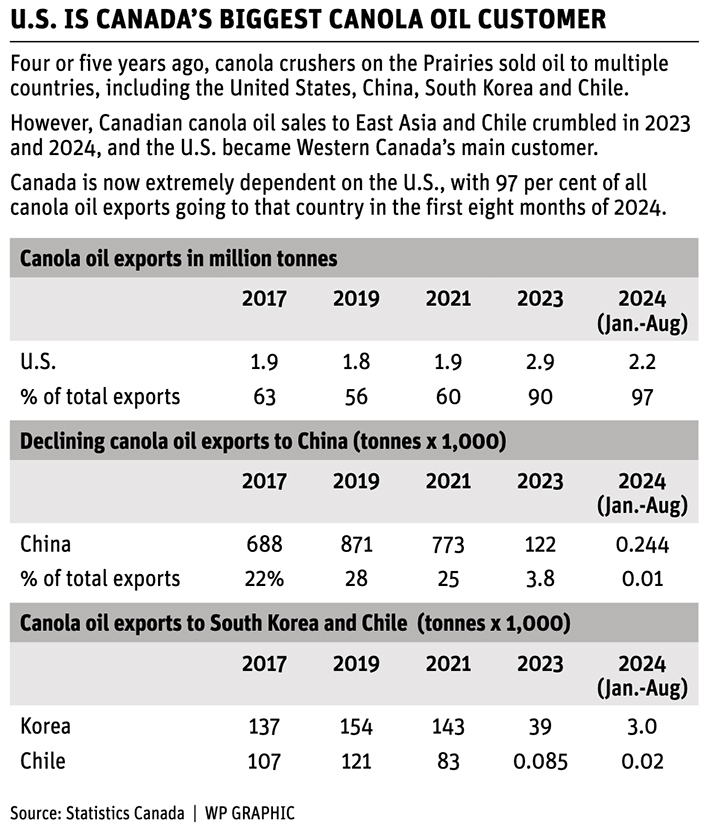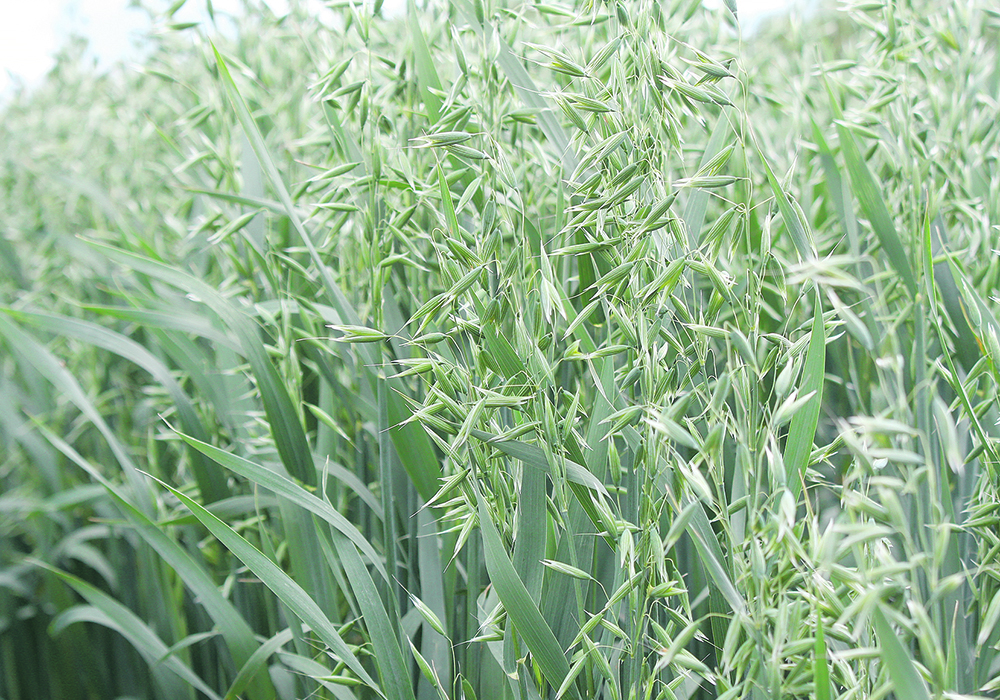Ninety-seven percent of Canadian canola oil and 83 per cent of oat exports have headed to the United States recently
SASKATOON — The Canola Council of Canada is taking U.S. president-elect Donald Trump’s threat of a 25 percent import tariff seriously.
“When you’ve got a new government coming into your number one market and they’re talking about imposing tariffs, it’s not something to be ignored,” said council president Chris Davison.
Related stories:
“But at the same time, I guess I would say at this stage we don’t want to overreact.”
Read Also

Short rapeseed crop may put China in a bind
Industry thinks China’s rapeseed crop is way smaller than the official government estimate. The country’s canola imports will also be down, so there will be a lot of unmet demand.
There is conjecture that Trump’s tariff threat is a strategy to bring Canada and Mexico to the table on issues unrelated to trade.
In fact, Trump said himself that the tariffs would be broadly applied unless Canada and Mexico agree to curb the flow of drugs and illegal migrants across their borders.
Canada does not ship much canola seed to the United States, but it is the top market for oil and meal.
The U.S. purchased 255,005 tonnes of canola oil through the first eight months of 2024, or 97 per cent of total exports for that period.
It also bought 257,900 tonnes of meal, or 59 per cent of exports.
“Suffice it to say, the duties would hurt the Canadian canola industry,” said Davison.
“You would create a certain amount of instability, unpredictability and added costs.”
The new threat comes at a time when China, Canada’s top market for canola seed, is conducting an anti-dumping investigation that could also result in import tariffs in that crucial market.
Davison said it is too early to determine how all this could affect investment decisions for some of the proposed new crush plants.
There is not a lot that the council can do other than point out to the Trump administration the total impact that Canadian canola has on the U.S. economy.
That impact is estimated at $11 billion, a 75 per cent increase over the last 10 years, according to a recent economic impact analysis commissioned by the council.
It covers the entire gamut, including the impact on U.S. food end uses, biofuel, livestock, processing and refining, bottling and packaging and transportation.
“What we know is we’ve got a highly valuable, mutually beneficial relationship on both sides of the border,” said Davison.
“We’re going to continue to make sure that that is known.”
Oats is another crop that is highly dependent on the U.S. market.
It has accounted for 83 per cent of Canada’s oat exports over the past five years, giving Canada a 97 per cent share of that market.
“Obviously, that 25 per cent tariff would create a huge challenge not only for us as Canadian farmers, but also to U.S. consumers,” said Shawna Mathieson, executive director of the Prairie Oat Growers Association.

She doesn’t know whether the tariff would affect volumes shipped to the U.S., which amounted to 947,500 tonnes by bulk shipment in 2023-24, according to the Canadian Grain Commission.
Canada doesn’t have much competition in that market. Sweden and Finland would be the top competitors, but they have logistical challenges. Chile is a player at times, but the country’s production is sporadic. Australia is another potential supplier, but it has some phytosanitary issues.
She thinks the bigger impact will be on the price of various oat-containing products. Products that are heavily reliant on oats such as Cheerios, oat milk and oatmeal could face big price hikes unless the manufacturers are willing to reduce their margins.
Any price increases could impact overall U.S. demand for the crop, said Mathieson.
But it would likely take a while for the trickle-down effect.
In the meantime, she doesn’t think the tariffs, which Trump has threatened to implement upon his inauguration Jan. 20, 2025, would have much of an impact on Canadian oat acres.
“There’s not a lot of carryout in oats right now, so the speculation is that oat acres need to come up,” she said.
Agriculture Canada is forecasting 400,000 tonnes of carryout at the end of the 2024-25 marketing campaign.
Growers planted 2.9 million acres of the cereal in 2024, which was more than the previous year but about one million acres smaller than the crop planted in 2022.
















